
Pros
- High-quality music streaming
- Hi-res and spatial included for free
- impressive music catalog
Cons
- Not great for non-Apple users
- Spatial music is non-essential
- Competition offers similar features
The rise of music streaming services ended the need to buy songs or albums from services like iTunes almost overnight. It may have taken a few years from there, but Apple Music came to bridge the gap. At $11 a month, Apple’s service is an affordable way to stream the 100 million songs in its catalog, and these are available in lossless quality, or even spatial. However, with Apple Music, there are no audiobooks or podcasts to muddy the waters, and you can integrate your existing digital library, if you still have one.
Apple Music makes the most sense for Apple users, though it’s possible to have an almost-as-enjoyable experience without the hardware. The app is a joy to use and the radio stations are fun, but just don’t expect too much from spatial audio. In short, while it may have taken the company years to come out with a competitor to Spotify, Apple Music has grown to become one the best streaming services available.
Read more: Best Music Streaming Service of 2024
What is Apple Music?
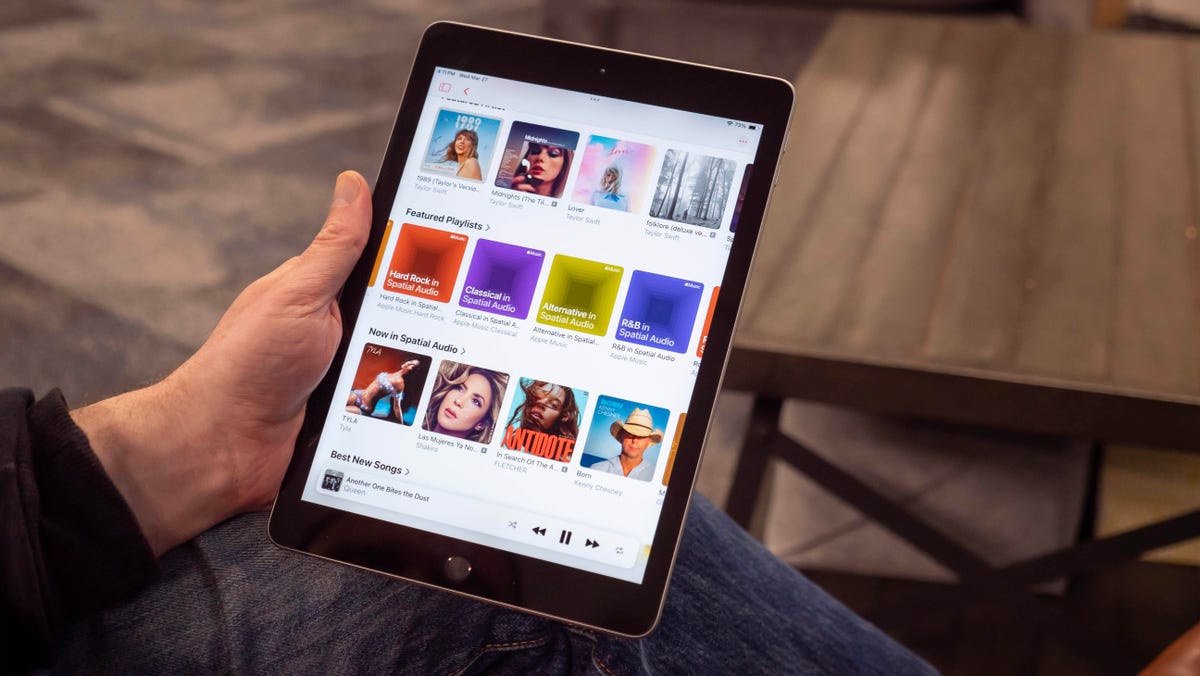
Apple Music is a music-streaming service available in dozens of countries, on both iOS and Android, as well as being the default service for the Siri voice assistant. There’s a number of “beats” a streaming service like Music needs to hit if it’s going to compete in 2024:
-
100 million songs
-
Cost around $10 a month (Apple Music is $11)
-
Apps for MacOS, Windows, iOS and Android (at least)
Given these criteria, all of the major services would appear the same, and while some tried mixing things up with “exclusive” albums, thankfully this trend was short-lived. Instead, services have found other ways to offer unique content for paying customer. For instance, Spotify has both podcasts and audiobooks, and AI in everything. YouTube Music seamlessly incorporates music videos from YouTube. Qobuz, like Apple, streams hi-res music, while also making hi-res available for purchase (unlike lossy iTunes).
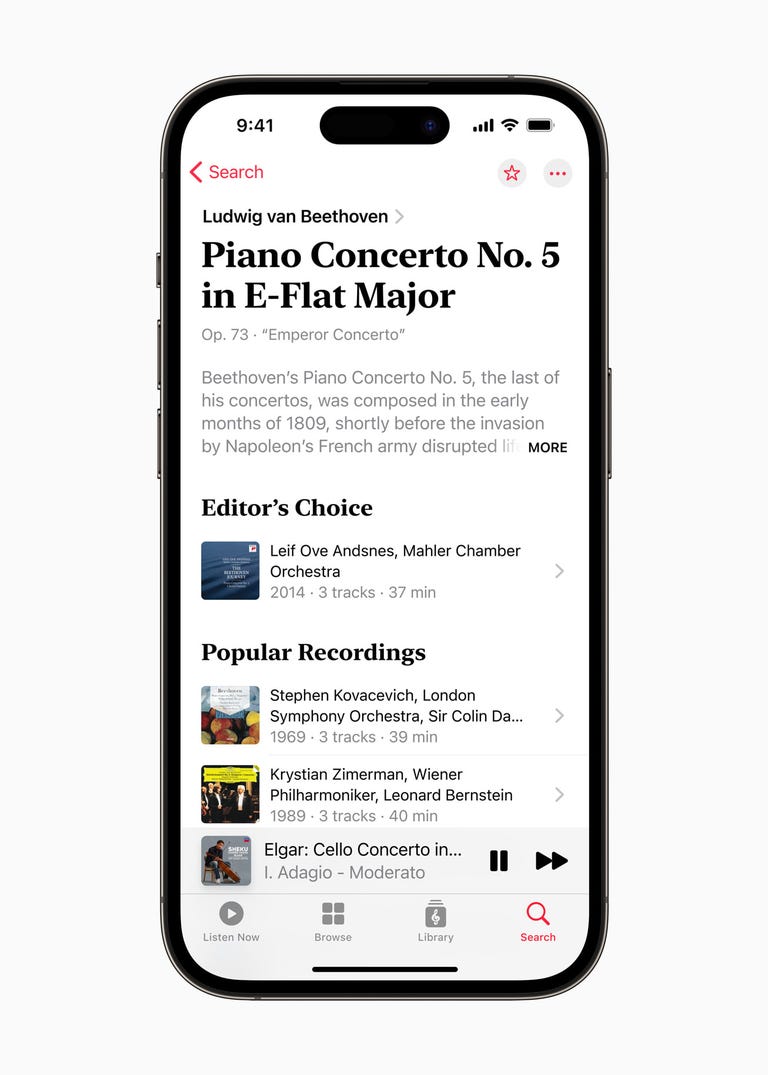
Apple Classical is available exclusively on iOS
Apple offers a number of features including “human” radio stations, spatial music and even a karaoke mode. While spatial is based on Dolby Atmos, artists will sometimes produce a specific “spatial” mix exclusively for the Music service. Additionally, Apple Music Classical is included as part of the subscription, and this standalone app becomes another way to enjoy orchestral music in a way that suits the genre. Though AI isn’t an overt part of the company’s offering (yet), the company is expected to change this with iOS 18.
Unlike competitor Spotify, there is no ad-supported Apple Music service, though users can stream their iTunes purchases and listen to the Beats 1 service through the app. For most people, using Apple Music involves a monthly fee. In terms of paid US subscribers, Spotify is still in the lead with 44 million subscribers, as of February 2024, compared to Apple’s 33 million. If you’re interested in trying out the service first, the company does offer a free month for new subscribers (or six months with the purchase of some Apple hardware).
Despite music videos being a new focus for Spotify, they are already there on Apple Music, though it’s a little difficult to locate them organically. You may find a handful in your library — I have no idea how my own selections got there, personally — but in order to find more, you need to go to Browse > More > Music Videos. They’re not sorted according to your preferences, and mostly consist of collections of artists and new pop videos.
Like other services you can download music for offline listening, whether for your computer or a mobile device, and the app will convert them to a secure, encoded format.
What’s Apple Music like to use?
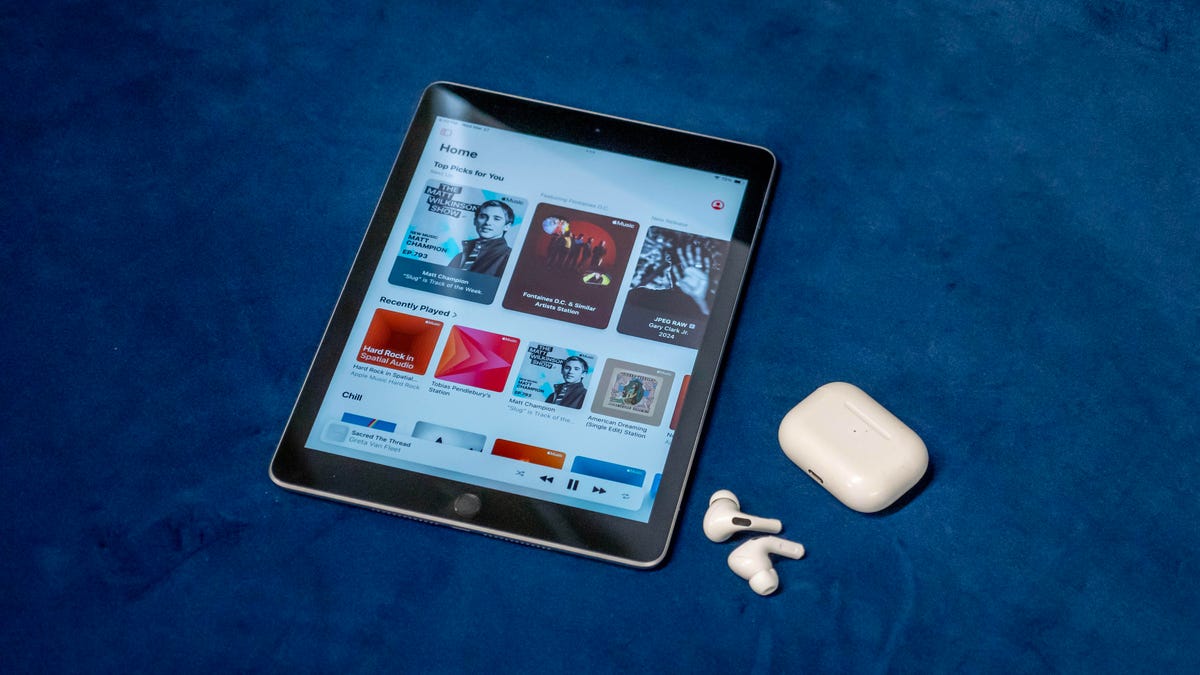
Apple Music is available on a number of platforms, including iOS, Mac OS, PC, Android, Xbox, PlayStation, Sonos and Roku.
With its emphasis on music — there are no podcasts or audiobooks — Apple Music doesn’t need to sport a complicated interface. That said, the way the app works hasn’t changed much since the service first appeared in 2015, whether it’s for desktop or for mobile devices. Call it consistency, perhaps.
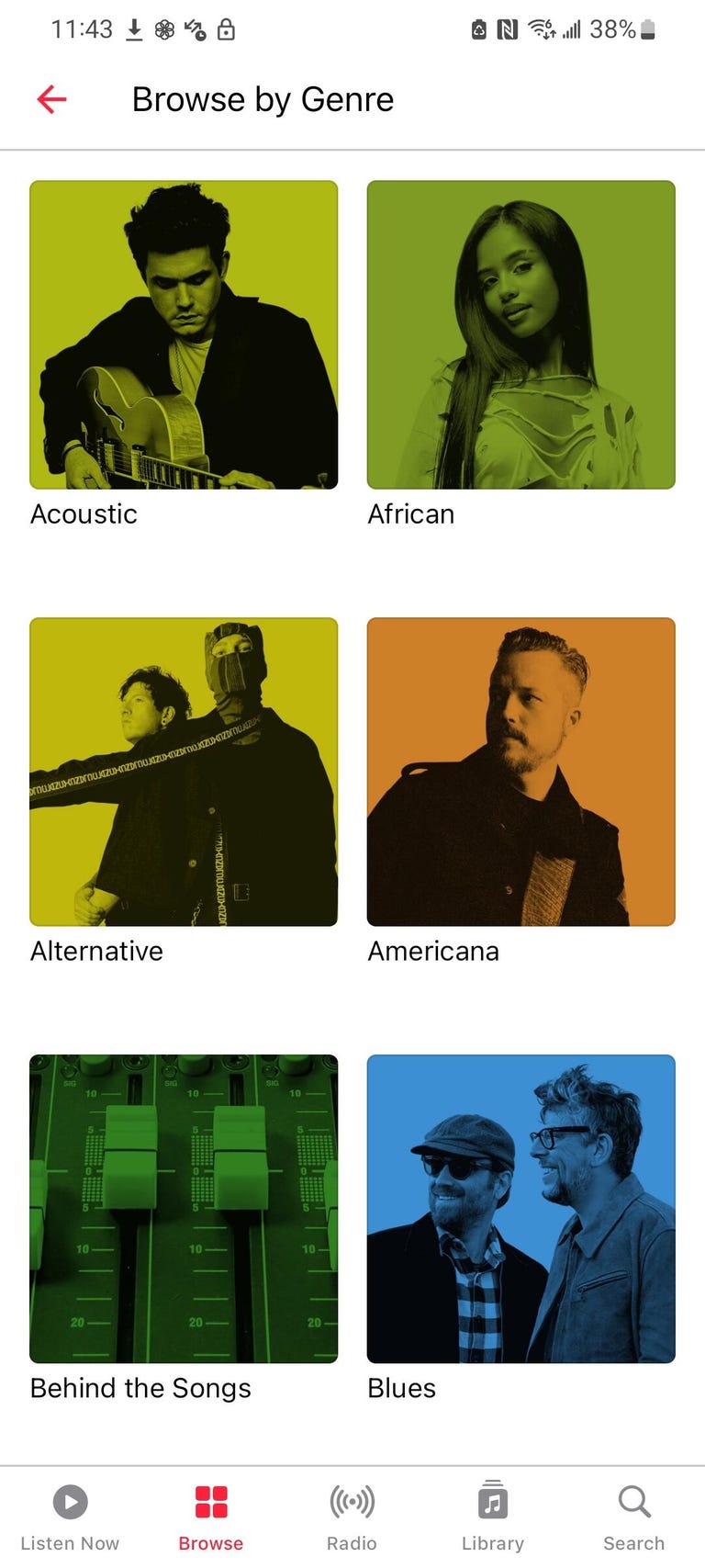
The Apple Music interface on an Android phone
Starting at the bottom of the mobile app you’ll find it broken into separate sections: Home, Browse (playlists and discover content), Radio, Library and Search. While Spotify has gone almost completely algorithm based for its “For You” section, Apple still has a good number of old-fashioned radio stations, including Beats 1 (which is available without a subscription). Zane Lowe is the most prominent of the service’s DJs, but you’ll also find “stations” hosted by the artists themselves, including Dolly Parton, Blink 182’s Mark Hoppus and Anderson.Paak.
Like any streaming service, however, the corresponding Browse section is only able to surface a tiny fraction of the content. It’s fun to peruse if you’re not sure what you want to listen to, but if you’re like me, you’ll spend most of your time in either Search or the Library instead.
The Library section is self-explanatory — it’s where all of your saved albums, artists, songs and playlists live. If you “like” a song or album, it ends up here and is arranged alphabetically. Clicking on an artist from your Library, for example, brings up their top songs first, but if you keep scrolling you’ll find playlists and a bio at the bottom. Meanwhile, the Search tab is the best way to find anything, and results are relatively accurate. It also surfaces playlists and the music videos I mentioned before.
On desktop, the ergonomics of Apple’s music players haven’t changed since the 2000s, and so maybe it’s time to consider a rethink. For instance, the desktop app includes dedicated transport controls at the top, and while this is probably second nature for a MacOS user, for a bottom-of-the-screen-upwards interface like PC, it’s ergonomically a little awkward. None of the mobile or streaming Apple Music players include playback controls, though all of its competition does, where the controls live at the bottom of each player.
Integration with Apple products
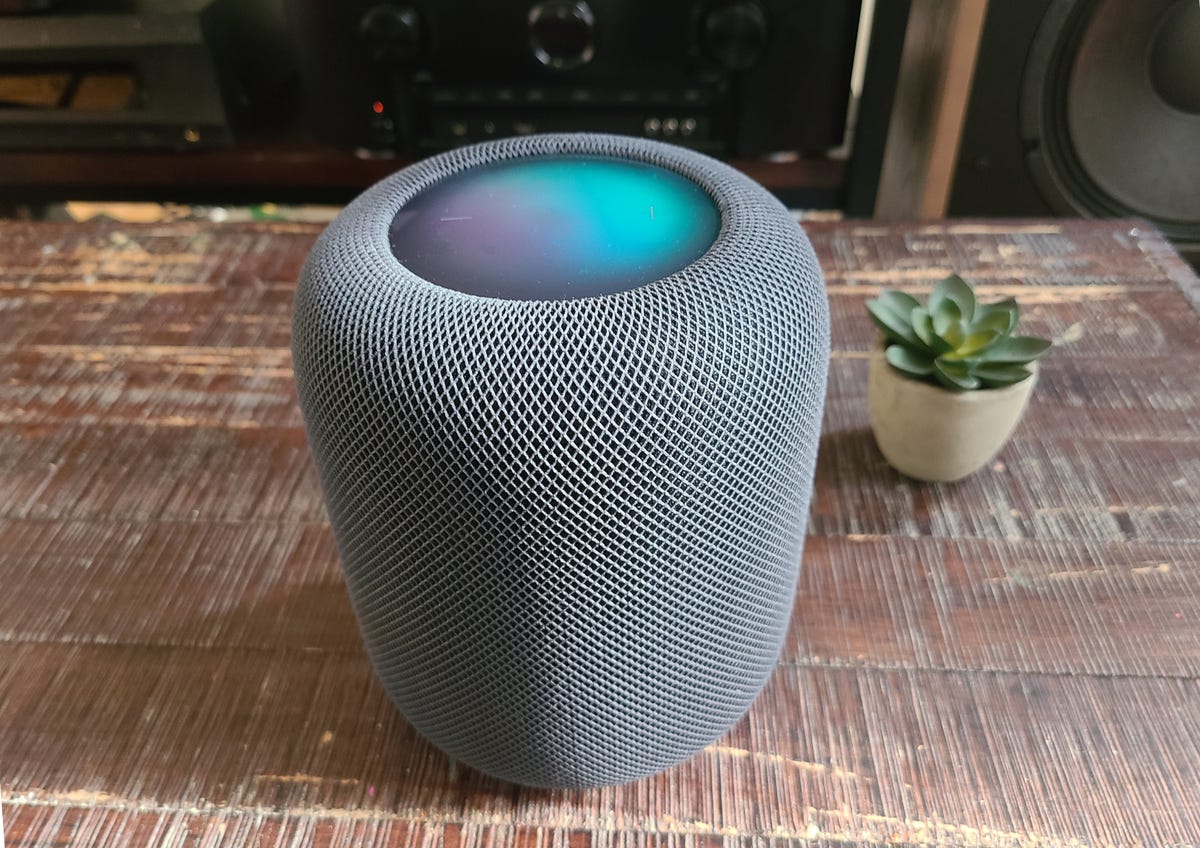
The HomePod 2 is able to play spatial audio from Apple Music.
For the longest time, Apple was a closed loop. If you wanted to listen to iTunes purchases, it made the most sense to own an iPod, for example. Yet in recent years some of the strictures have loosened and Apple Music is now available on a number of different platforms, just like its video counterpart Apple TV Plus. While you can happily purchase an Apple Music subscription without owning a single Apple device, it does make more sense if you do. Why? In a word: integration.
The company’s ability to package its hardware and software offerings together makes it easy for Apple users, but a little harder for everyone else. As an example, Apple AirPlay enables you to stream music from your iPhone to your Apple TV, or any number of compatible speakers. While if you’re an Android user you can still stream using Chromecast built-in, but the ability to stream to AirPlay devices is closed to you.
For all its advantages, though, Apple AirPlay is still a peer-to-peer connection and capped at CD quality (16bit/44kHz). This means that streaming to another speaker will wear your phone battery down in a similar way to Bluetooth. In addition, while competitive systems like Chromecast can stream hi-res between devices, the only way to listen to high-quality spatial audio is natively on an Apple device, like an Apple TV or a HomePod.
Additionally, if you do own a HomePod or HomePod then Apple Music is set as the default service, though you can opt for Pandora, Deezer, Tidal, or YouTube Music instead. You can also set Apple Music as your default service if you own a Google Nest speaker, though through my weeks of testing, I still prefer Spotify for this, as the voice results were more accurate.
Yes, iTunes is still a thing
Apple’s iTunes Store was a very successful attempt to curb illegal file sharing, and while the store still exists to this day, it’s just…changed. While you can still buy music on iTunes without a music subscription there are plenty of higher-quality alternatives. If you want to buy from the store, it’s now integrated into Apple Music as its own tab within most apps, barring Windows 11.
As part of my iTunes testing, I bought a copy of Spiritualized’s And Nothing Hurt on sale for $5, which was encoded in 256 kbps. Though I’ve had success downloading my purchases in the past in AAC format onto a Mac, I was only able to get these in the same encrypted lossless files I’d get for offline Music downloads. Translation: These files weren’t part of my purchase, but a regular offline library cache. As the PC version downloaded these tracks OK, I’m going to call this a one-off.
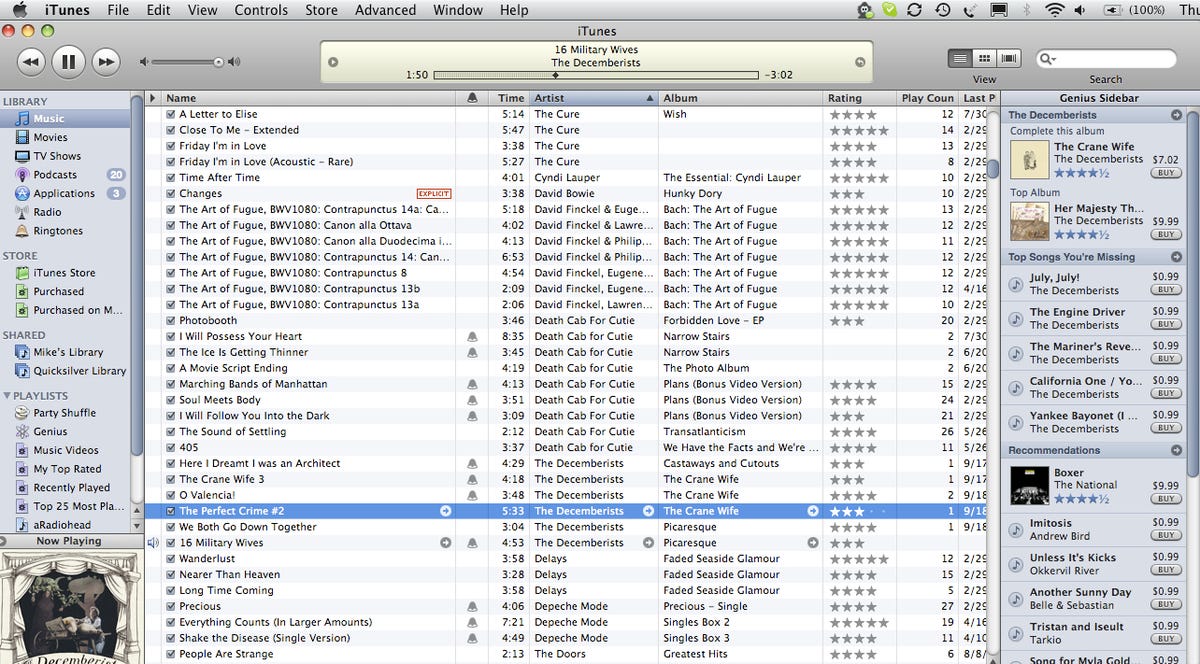
Hey, kids. Remember this old chestnut?
Yet, as the company has moved away from an iTunes mentality and toward the all-you-can-eat Music mindset, some of the app’s older features are no longer needed. For example, iTunes Match is a product that enables you to store a digital copy of a music library you own, whether on a computer or a NAS, in the cloud. Yet, Apple says if you have a Music subscription, then the $25-a-year Match is not required — unless you have a old Apple TV 2nd gen (non-4K). For those few this applies to, those who subscribe to Apple Music and still pay for Match to use on an old streamer, it’s worth springing for a new Apple TV 4K. You don’t even need to own a 4K TV for the new streamer to work well in your system. Plus, no more $25 a year.
If you have a digital collection on a hard drive or computer that you want to upload to Apple Music without paying for Match, here’s how to do it:
- In the Music app on your Mac, choose File > Add to Library or File > Import. Be aware that you can only import MP3 and not FLAC.
- Alternatively, you can drag a file from the desktop directly into the Library tab on the left side of the app. It’s also worth noting that iTunes Match uploaded songs will be lossy 256kbps AAC, while normal Apple Music files are lossless or better.
Meanwhile, if you want to convert your library from another streaming service to Apple Music, I have had a lot of success with Soundiiz. While it does cost a few dollars a month you can simply pay once and then cancel straight after converting. Do people hop around once they’ve picked a music streaming service? I’ve personally vacillated between Qobuz and Tidal while their prices and offerings have changed in competitiveness and compatibility. If I want a service that better suits casual listening, it’s always been Spotify.
How does Apple Music sound?
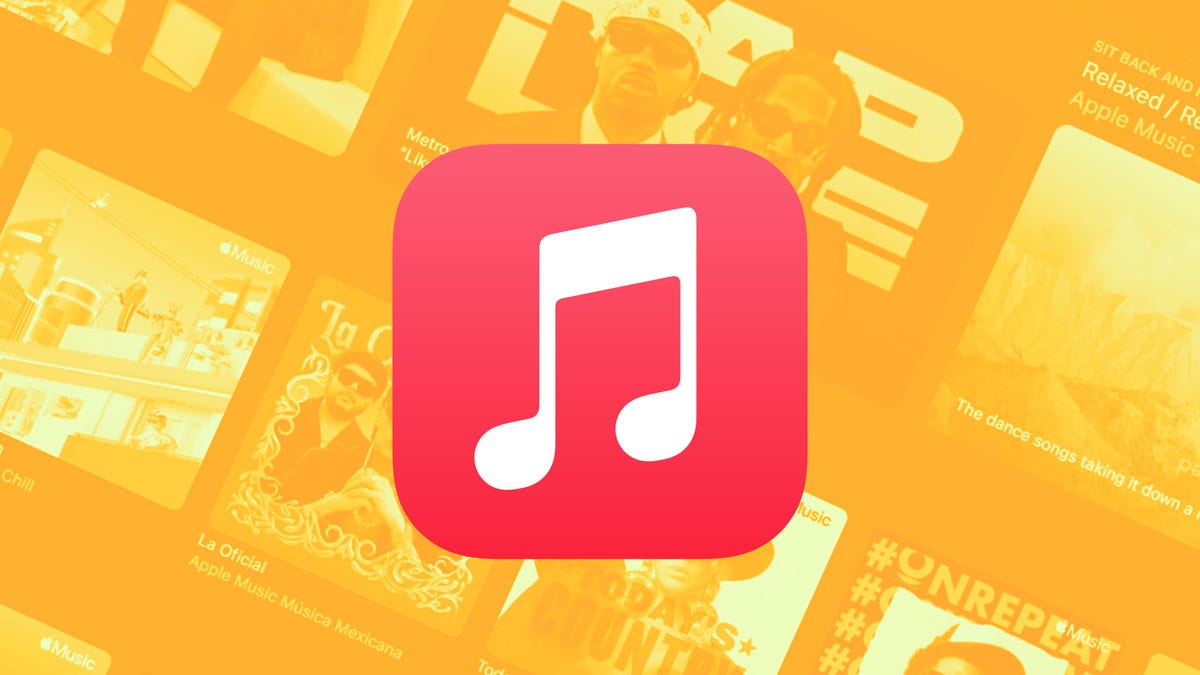
With 100 million tracks to choose from, across the entire history of recorded music, it goes without saying that sound quality is going to be variable. Yet here I wanted to test two main things: the differences between Apple lossless and “lossy” Spotify and Apple’s selection of spatial albums.
On the first point, an audiophile might say, “Hi-res is king,” and so therefore Apple is the winner. Yet, this is where things can get a little murky. Many popular recordings have been remixed and remixed numerous times, and there can potentially be dozens of versions of a particular album out there in the streaming world, spatial audio mixes notwithstanding. As a result, just because an album is in higher resolution, that doesn’t automatically mean it sounds “better” than a CD-quality or compressed version.
As one test of a recent track I knew well, I compared 2023’s The Score by Grian Chatten on both Spotify and Apple Music, on an Apple TV (making sure I was listening to full quality: Settings -> Audio Quality). Curiously, the Apple Music version of this song sounded flat and lacked dynamics, which is not something I heard from the Spotify version. This lossy version had seemingly more resolution and better punch. It’s a new recording, but I chalked up the disparity to a separate mix having been made for Apple Music.
Conversely, moving to the more “audiophile-friendly” Yulunga (Spirit Dance) by Dead Can Dance I heard the expected jump in quality that lossless can bring. The song features a reverberant hall, and compression can play havoc with this kind of sound by losing detail. The lossless Apple Music version had a more enveloping sound with sound coming from the back of the performance space while there was less hall sound and more echo in the right channel instead on Spotify’s version.
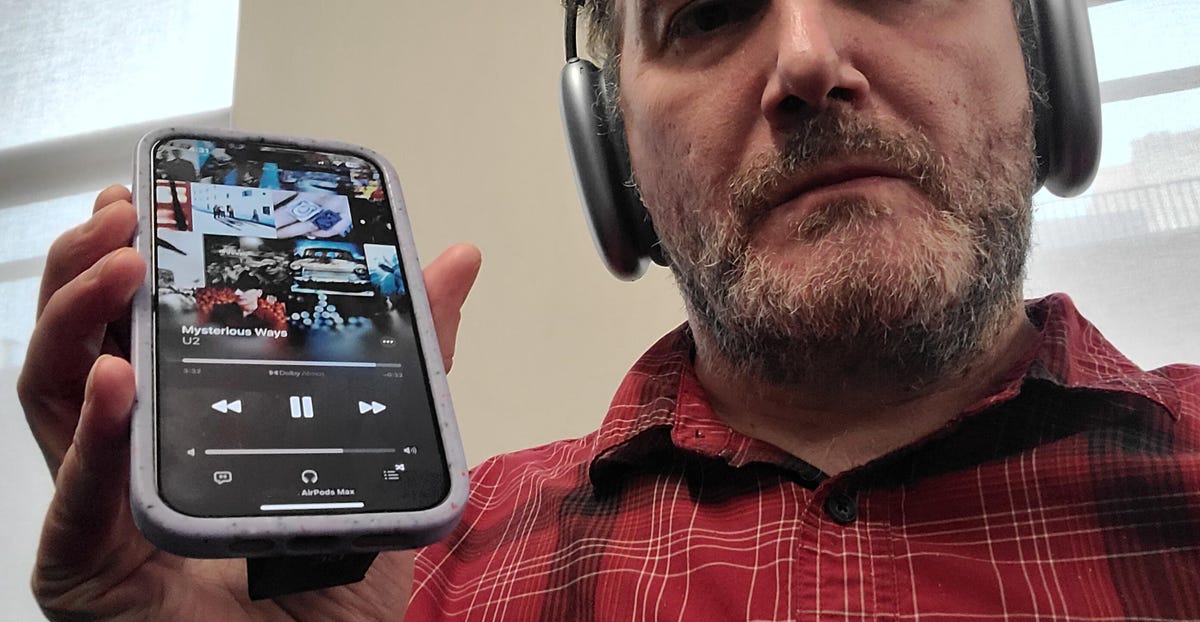
Listening to spatial music on AirPods Max
When it comes to spatial audio, I agree with my colleague David Carnoy when he says the technology makes the most sense when watching a movie. Even so, I’ve listened to spatial audio music on every different type of Apple device over the years — whether it’s iPhone, AIrPods, Apple TV or Homepod. A dedicated Dolby Atmos system has consistently given me the best sound, but I wanted to know how good the mobile experience could be. I listened to a number of spatial audio mixes of songs using the Apple AirPods Max and comparing the differences between stereo (Off), Fixed and Head Tracking.
The song that sounded best was The Chain by Fleetwood Mac; Lindsay Buckingham’s voice was crisp and when in head-tracking mode, his voice was easiest to follow as I turned this way or that. By contrast, the bombastic Mysterious Ways by U2 created a bubble of sound in front of me but it was missing instrument separation. It was a literal sound blob, which did move position convincingly when I turned my head. Compared to the standard stereo mix, with its extreme left/right separation, the spatial mix of this song couldn’t compete for pure fidelity. This disparity isn’t a result of spatial music, specifically, but highlights the contrasting choices made by the remixers of these two pop tracks. “Spatial” does not automatically equal better. That’s the takeaway.
Should you subscribe to Apple Music?
With virtually identical music catalogs and pricing, the music service that you pick will inevitably be the one that best suits your needs. It could be that it comes down to those feature differences I mentioned in the beginning. I would argue that Spotify has the greatest claim to being an “essential” music service as it’s the most platform-agnostic, thanks to Spotify Connect, and has a wide range of entertainment options extending to audiobooks.
The fact that Apple Music works best for iPhone users is the biggest point in its favor, and probably the most attractive “feature” that it has. Though Apple has made some concessions to music fans who don’t own its devices, its service still makes the most sense if you own the company’s hardware, though it’s slowly improving. While Spatial music may be fun, it’s the focus on an extensive catalog of high-quality music that guarantees its users value for money.




















+ There are no comments
Add yours